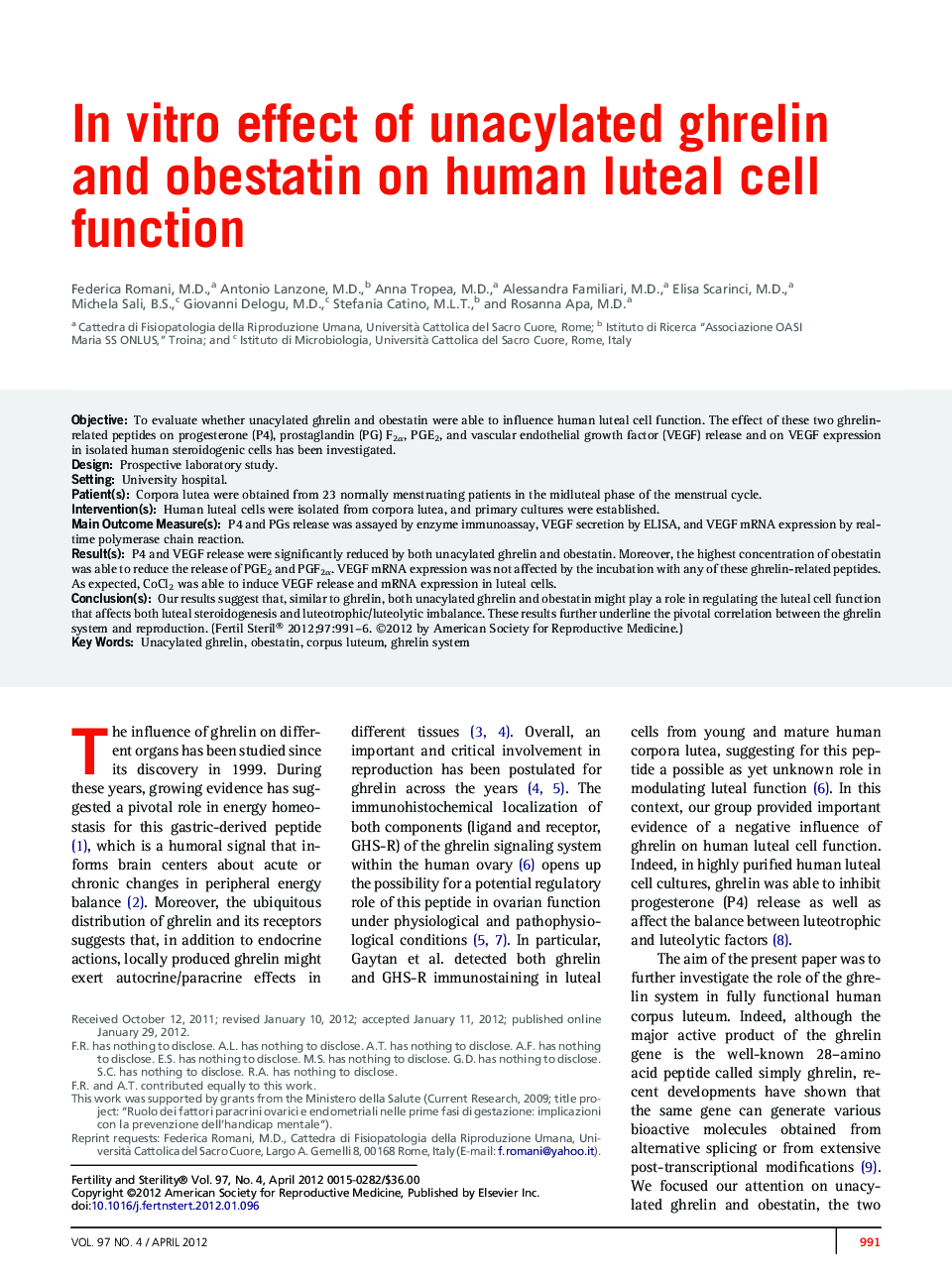| Article ID | Journal | Published Year | Pages | File Type |
|---|---|---|---|---|
| 3938838 | Fertility and Sterility | 2012 | 6 Pages |
ObjectiveTo evaluate whether unacylated ghrelin and obestatin were able to influence human luteal cell function. The effect of these two ghrelin-related peptides on progesterone (P4), prostaglandin (PG) F2α, PGE2, and vascular endothelial growth factor (VEGF) release and on VEGF expression in isolated human steroidogenic cells has been investigated.DesignProspective laboratory study.SettingUniversity hospital.Patient(s)Corpora lutea were obtained from 23 normally menstruating patients in the midluteal phase of the menstrual cycle.Intervention(s)Human luteal cells were isolated from corpora lutea, and primary cultures were established.Main Outcome Measure(s)P4 and PGs release was assayed by enzyme immunoassay, VEGF secretion by ELISA, and VEGF mRNA expression by real-time polymerase chain reaction.Result(s)P4 and VEGF release were significantly reduced by both unacylated ghrelin and obestatin. Moreover, the highest concentration of obestatin was able to reduce the release of PGE2 and PGF2α. VEGF mRNA expression was not affected by the incubation with any of these ghrelin-related peptides. As expected, CoCl2 was able to induce VEGF release and mRNA expression in luteal cells.Conclusion(s)Our results suggest that, similar to ghrelin, both unacylated ghrelin and obestatin might play a role in regulating the luteal cell function that affects both luteal steroidogenesis and luteotrophic/luteolytic imbalance. These results further underline the pivotal correlation between the ghrelin system and reproduction.
